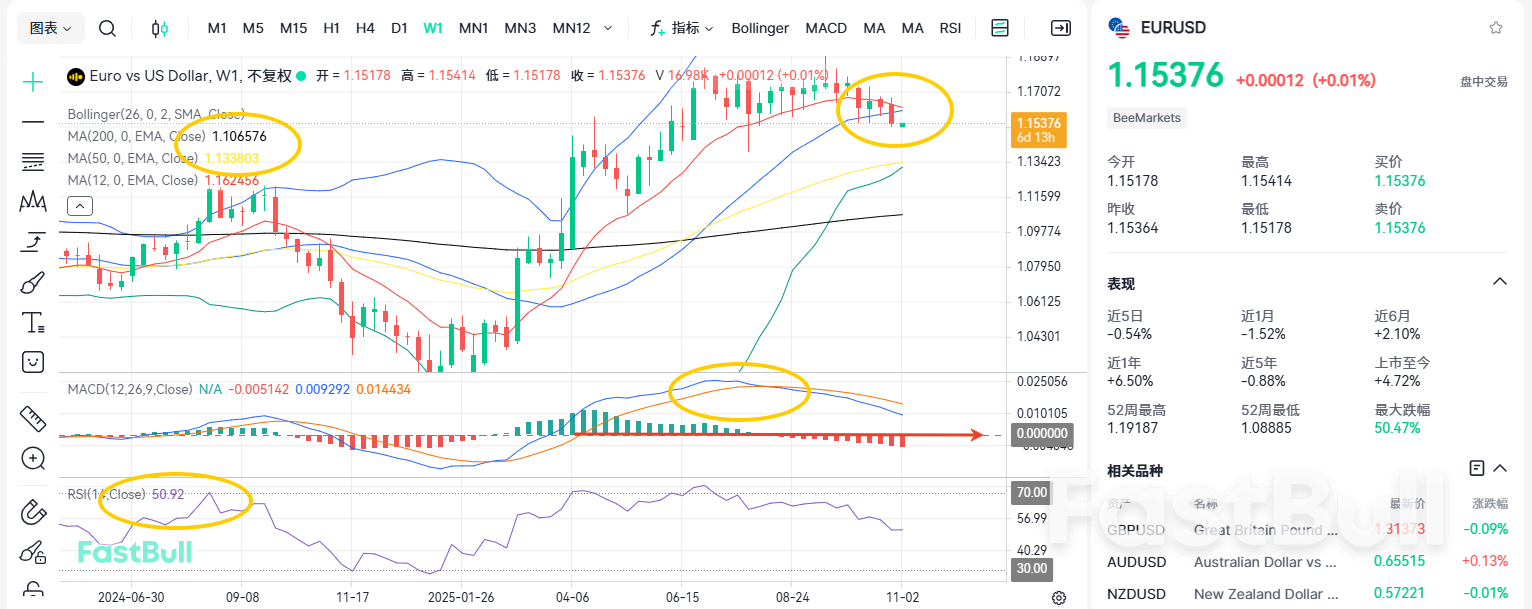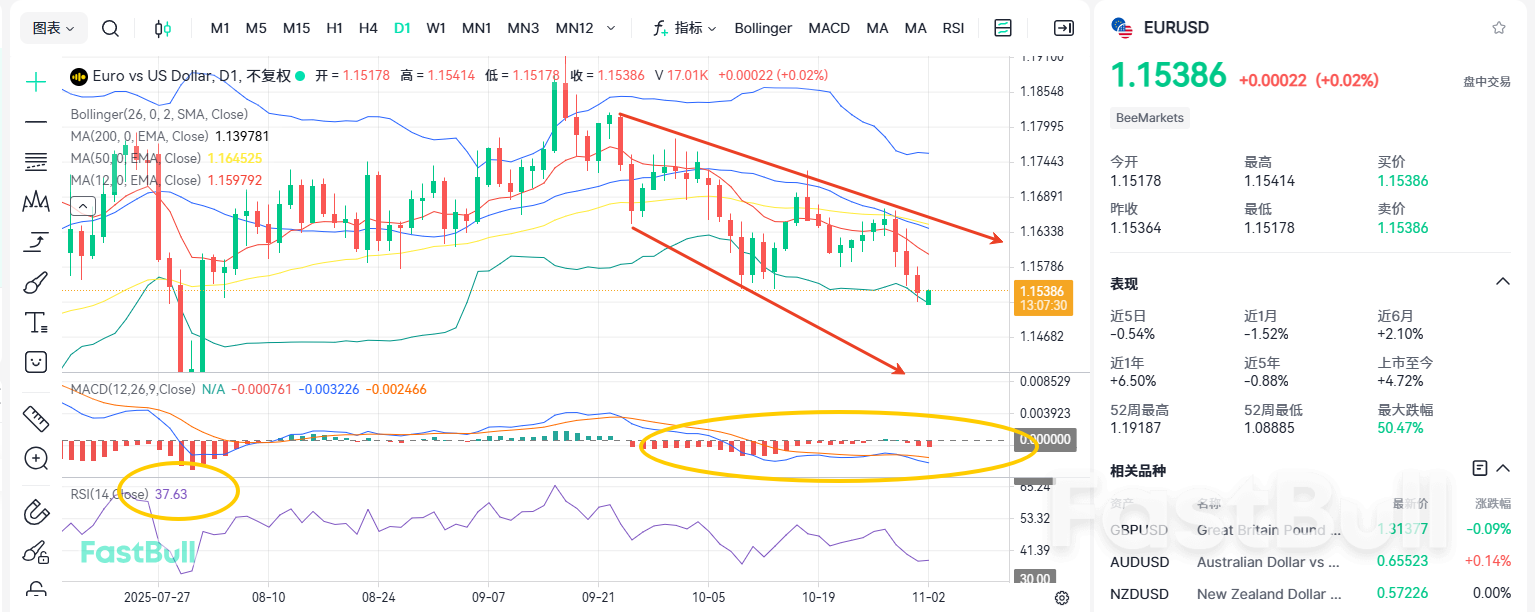Fundamentals
The ECB announced its monetary-policy decision on Thursday. As widely expected, the Governing Council left the three key policy rates unchanged: the main refinancing operations (MRO) rate at 2.15%, the marginal lending facility (MLF) rate at 2.40% and the deposit facility (DF) rate at 2.00%. The hold was fully priced in, given both the Council's prior guidance and the fact that the euro-area easing cycle started well ahead of the Fed's.
The ECB has been cutting rates since June 2024, with a cumulative total of eight rate cuts. These measures have finally brought the rates to a relatively comfortable neutral level, without any signs of rising price pressures, while the economy has maintained moderate and stable growth. Christine Lagarde, President of the ECB, reiterated at the subsequent press conference that the ECB is currently in a good position. She further emphasized that officials are prepared to ensure inflation stabilizes at the 2% target level over the medium term. Finally, Lagarde noted that some downside risks to growth have eased, but this is not the case for inflation. The ECB's decision had no real impact on the euro. After market participants digested this news, EURUSD continued its downward trend for the week.
The FOMC lowered the federal funds target range by 25 bp to 3.75%–4.00%.
Governor Stephen Miran dissented in favor of �50 bp, while Kansas-City Fed president Jeffrey Schmid preferred no change. The Committee also announced an immediate end to quantitative tightening. The statement itself moved markets little. However, the reaction came only after Chair Jerome Powell's press conference. Powell struck a distinctly hawkish tone, framing the cut as a risk-management move but stressing that a December reduction is "not a given. "On speculative repricing, the DXY spiked and equities closed marginally lower, while the probability of a December cut fell sharply.
Furthermore, Powell also emphasized the challenges posed by the government shutdown to assessing the economic situation, which has led to a lack of official data, particularly employment-related figures. "Perhaps we should be more cautious," Powell noted. "I am not making a commitment here; I am simply saying that there is indeed a possibility that we might say, 'We really can't see the situation clearly right now, so let's slow down.'"
At the moment, the U.S. government shutdown has entered its fourth week. Federal coffers ran dry on 1 Oct and the Senate has yet to coalesce around a continuing-resolution bill. After the Fed's announcement, price action shows markets are pricing in a protracted closure, but overall sentiment remains relatively orderly.
Trade-war headlines again dominated the newswires this week. After a Seoul sidebar between President Trump and President Xi Jinping, the news-flow turned constructive: Washington will roll back its fentanyl-linked tariff to 10%, while Beijing pledged stepped-up U.S. farm purchases, suspended rare-earth export curbs and agreed to launch energy-sector talks.
Separately, the U.S. unveiled an Enhanced Trade Agreement with Tokyo aimed at aligning critical-mineral supply chains and reaffirming prior joint pledges. Following a Tuesday meeting with Prime Minister Takashi Tachibana, President Trump confirmed that the previously threatened 25% levy on Japanese goods will be set at 15%. In return, Japan committed to a $550 bn industrial-investment package and market-opening steps for U.S. rice, autos and defence hardware.
Technical Analysis
On the daily timeframe, after the MACD on the EURUSD formed a death cross signal, the fast and slow lines fell below the 0-axis. This indicates the market has entered a bearish phase. The Bollinger Bands are opening downward, and the moving averages are diverging downward. The price is fluctuating downward along the EMA12. The RSI reads 37, meaning the market has entered the oversold zone. If the price breaks below 1.16 again, it will most likely drop to the integer level of 1.15 and around 1.139 (near the EMA200).
From the weekly perspective, the Bollinger Band channels are narrowing. The price broke below the Bollinger Middle Band in a large bearish candlestick pattern. After the MACD formed a death cross, the fast and slow lines are pulling back toward the 0-axis but still have a certain distance to cover, indicating the correction is not yet complete. The RSI reads 50, and the highs are gradually lowering, showing the market has entered a wait-and-see sentiment. Once the price fails to hold above the Bollinger Middle Band after a rebound, it will most likely fall to the EMA50 or even near the Bollinger Lower Band.
Therefore, the short-term trading strategy is recommended to focus on selling at highs.
Trading Recommendations
Trading Direction: Sell
Entry Price: 1.1526
Target Price: 1.12
Stop Loss: 1.173
Support: 1.145/1.14/1.12
Resistance: 1.182/1.192/1.2














